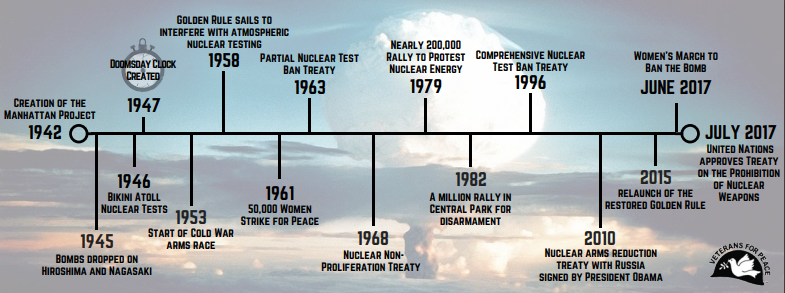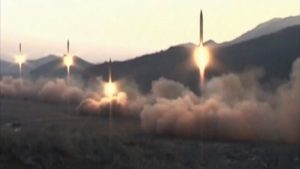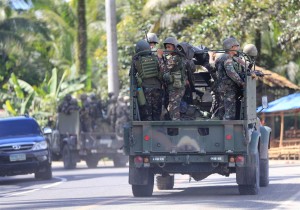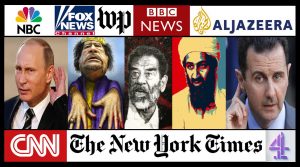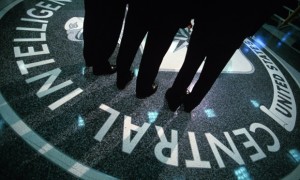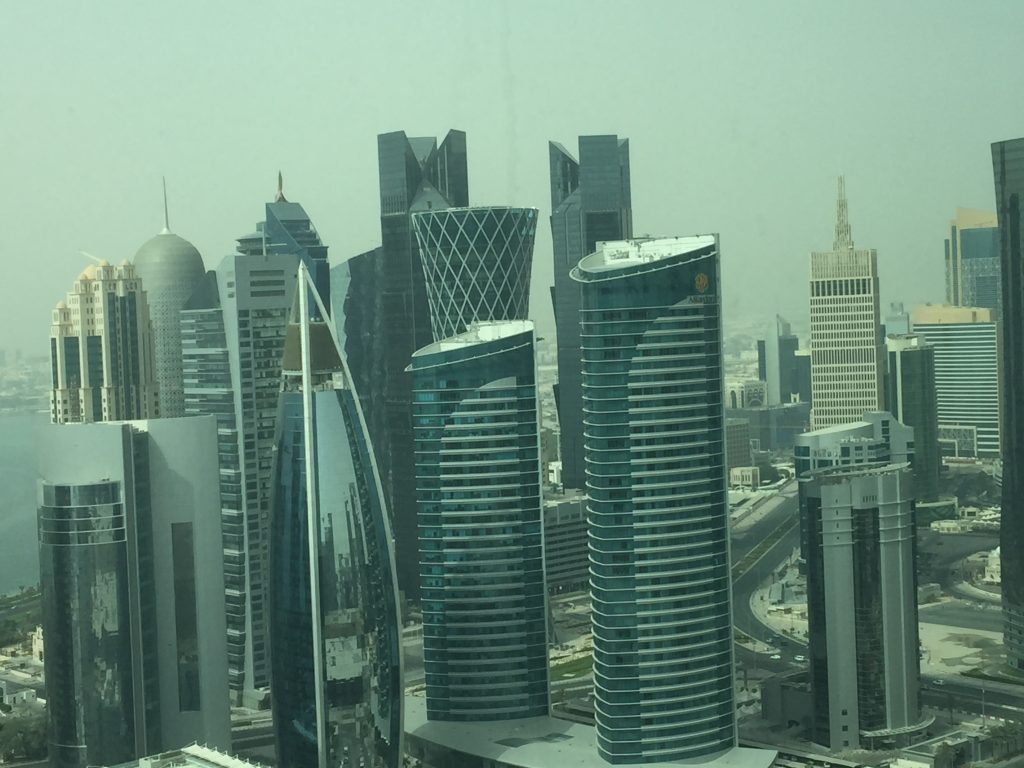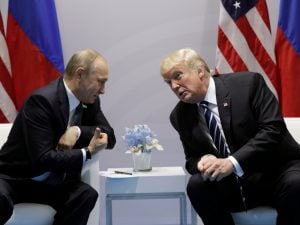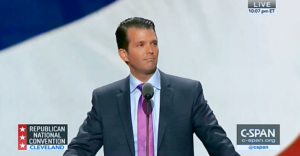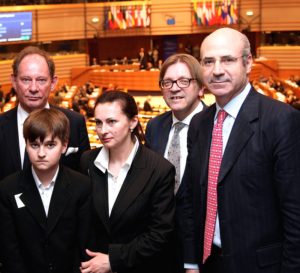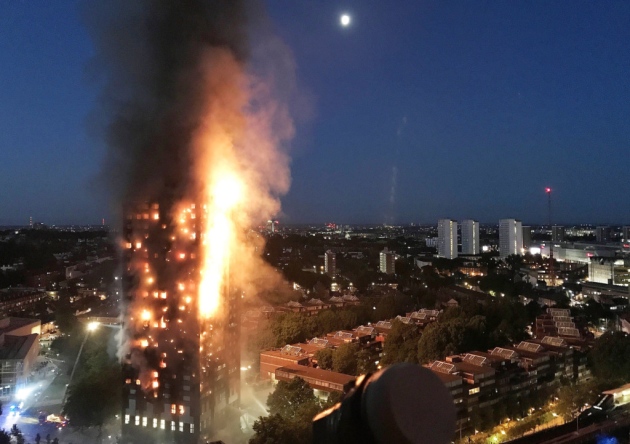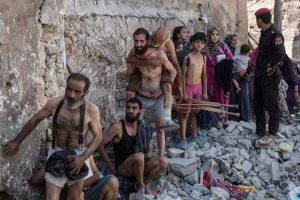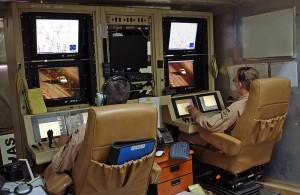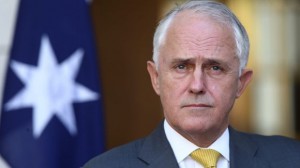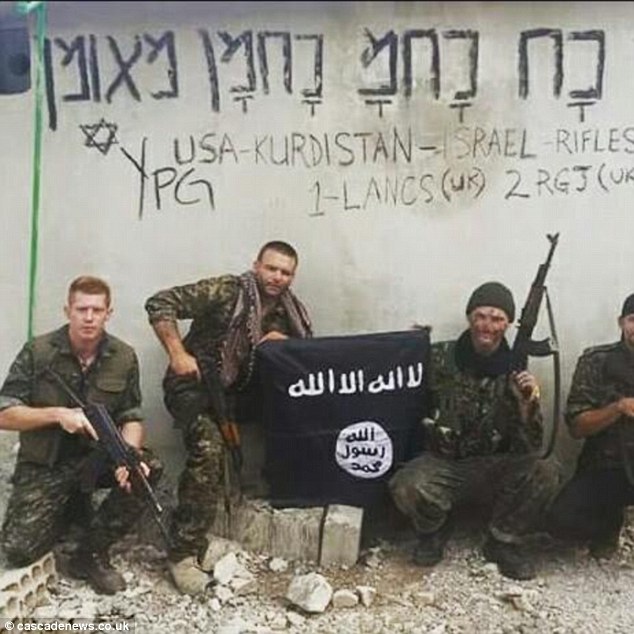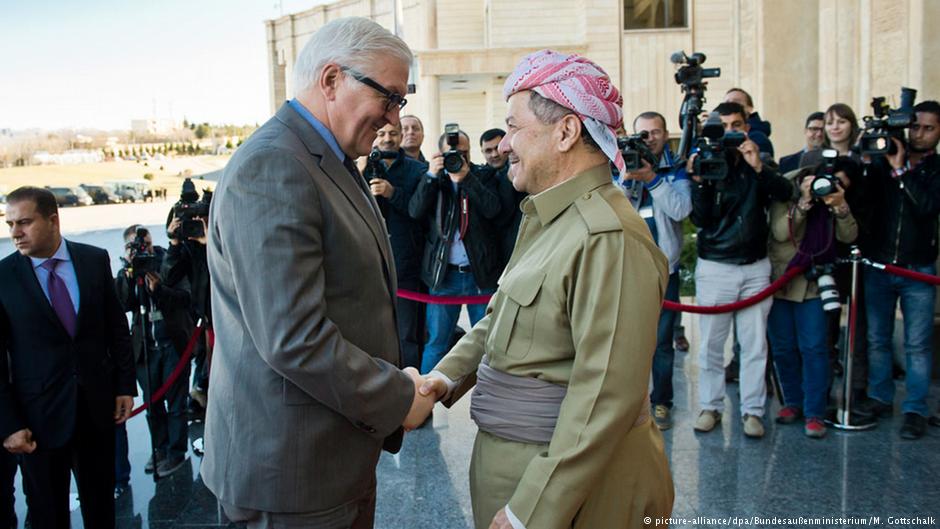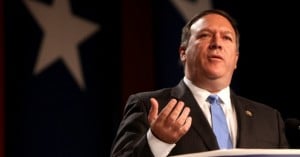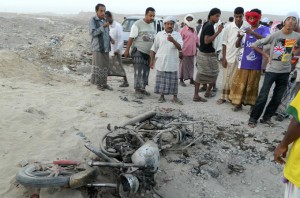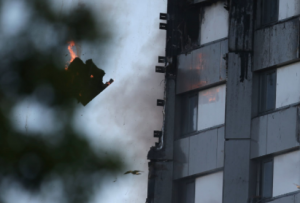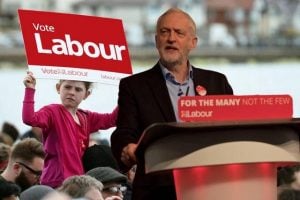“All Eyez on Me”: How Hollywood Depoliticized the Life and Death of Hip Hop Artist Tupac Shakur
July 18th, 2017 by James F. Tracy
All Eyez on Me (2017) is a lavish dramatization of controversial hip-hop artist Tupac Shakur’s brief, tragic, and largely misjudged life. The motion picture’s emergence more than twenty years after his untimely death is especially significant because it purports to accurately depict the biography of perhaps the most important and provocative black figure since Malcolm X, and does so for an entire generation too young to recall Shakur’s impact and, more importantly, the artist’s relatedness to deep state maneuvers against black enfranchisement and probable ongoing US counterintelligence efforts targeting public figures capable of wielding influence over the public mind.
Production of All Eyez on Me began in 2015 after a tentative 2011 settlement of a legal fight that ensued between the film’s producer, Morgan Creek, and Shakur’s estate. The parties continued to battle in court over production decisions even as Shakur’s mother, former black activist Afeni Shakur, died in early 2016. As the project ensued the film’s creators continued to ignore recommendations of Shakur’s family, particularly the eventual selection of music video producer Benny Boom as the film’s director. [1]
“There’s a whole lot of things that they would not have in the movie that actually happened,” remarked veteran director John Singleton, who was originally approved by the Shakurs to head up the film. “They stole the [film’s] rights from his mother. They made the movie they wanted to make, and hopefully one day I’ll get a chance to tell that story.”[2]
Without its powerful soundtrack and an at times moving portrayal of Shakur’s relationship with his mother, the film is a textbook example of how Hollywood enfeebles innately political subject matter. The viewer is invited to revel in a tediously idealized rendering of a celebrity seemingly doomed by his own naivete, personal lifestyle choices, and the inherent violence of hip-hop culture. As Singleton suggests, All Eyez on Me succeeds as a carefully constructed tableau of distortion and omission that misses (perhaps intentionally) the powerful socio-political dimensions of Shakur’s activism and expression while casting aside many uncomfortable yet pertinent factors leading to his demise.
“Prevent the Rise of a Messiah”
A most unsettling facet of All Eyez on Me’s narrative is its glaring isolation of US intelligence involvement in Shakur’s life to his early childhood years, a time when he witnessed surveillance and harassment of both parents due to their political activism. In the same vein, the romanticized depiction of Shakur’s transition from art school dropout to overnight sensation conveniently removes from consideration exactly how Shakur’s combined childhood poverty, black nationalist heritage, activism to quell gang-related violence, and subsequent artistic rise almost certainly made him a target of the very deep state forces then-implicated in the crack cocaine epidemic ravaging black communities.
In the decades following the successful disruption of social movements that began in the 1960s, the targets of US government subversion seldom changed. During this period, however, counterintelligence techniques were steadily refined To confront various forms of political engagement surging throughout the late 1960s in particular, the Federal Bureau of Investigation’s COINTELPRO program “secretly instructed its field offices to propose schemes to ‘expose, disrupt, misdirect, discredit, or otherwise neutralize’ specific individuals and groups.
Close coordination with local police and prosecutors was encouraged,” attorney Brian Glick observes. Despite COINTELPRO’s exposure and congressional investigations, such programs “persisted throughout the 1980s,” becoming “a permanent feature of U.S. government,” with the Black, Native American, and Chicano civil rights movements all subjected to routine surveillance.
One month before the assassination of Martin Luther King Jr. the FBI set out to focus on “Black Nationalist – Hate Groups,” according to the agency’s own Counterintelligence Program files. The US’s foremost national police force specifically sought to “[p]revent the rise of a messiah’ who could unify, and electrify the militant black nationalist movement. Malcolm X might have been such a ‘messiah;’” the document continues,
he is the martyr of the movement today. Martin Luther King, Stokely Carmichael, and Elijah Muhammad all aspire to this position … King could be a very real contender for this position should he abandon his supposed “obedience” to “white liberal doctrines” [nonviolence] and embrace black nationalism.[3, emphasis retained]
While All Eyez on Me depicts the struggle of Shakur’s parents with such abusive forms of law enforcement and surveillance, these experiences are represented as isolated chapters of Tupac’s life that have little-if-any direct relationship to the same forces that appear to have harnessed and misdirected his talents in his last few years. By failing to sufficiently acknowledge how the planned subversion of Black activists and public figures largely defined Shakur’s life path and career, the film succeeds as a classic demonstration of Hollywood whitewash and political miseducation.
Death Row Records: An Intelligence Operation?
Among the most significant and conspicuous features of All Eyez on Me’s depoliticized narrative is its failure to probe the true origins of Death Row Records—the label Shakur contracted with in the months leading up to his death, and its linkages to US intelligence and law enforcement.
In 1995 Shakur had served eight months of a one-to-for year term in an upstate New York prison for a sexual assault charge. Death Row’s director, former professional football player Marion “Suge” Knight, reached an agreement with Shakur to post the $1.4 million bond securing the artist’s release in exchange for his agreement to sign with Death Row.
Careful researchers conclude how thereafter Shakur witnessed his own talents reoriented and depraved under Knight’s tutelage and, more importantly, the darker forces behind Death Row.
Death Row was founded with seed money from Michael “Harry O” Harris, an aide to CIA-linked drug trafficker “Freeway” Ricky Ross, and flamboyant mob-linked Los Angeles attorney Dave Kenner. As the founder and owner of Death Row’s parent company, Godfather Entertainment, Kenner oversaw Knight’s management of Death Row.
Despite a string of serious violent crimes, Knight “seemed untouchable,” historian John Potash observes. “[I]t is most likely that Knight made a deal with police, as they failed to arrest him while he ran Death Row Records, until he completed his most important tasks. These tasks appeared to overlap U.S. intelligence’s agenda.”[4]
Knight’s rapid conversion from easy going and gregarious student and college football player at El Camino College and the University of Nevada Las Vegas to a “remote and serious character” with unusual access to resources suggest that powerful forces had entered his life. “Overnight, he had enough money to rent an apartment by himself and to purchase a series of late-model sedans,” journalist Randall Sullivan notes. “He regularly received visitors from Compton, and developed a reputation as perhaps the biggest drug dealer on campus.”[5]
Indeed, research by Potash and Sullivan point to Death Row’s close involvement with local law enforcement and the Los Angeles Police Department’s enlistment of COINTELPRO-style tactics to infiltrate and control the label. Veteran Los Angeles Police detective Russell Poole “discovered ‘dozens and dozens of police officers were working’ at all levels of Death Row Records. Det. Poole was told these officers could be considered ‘troubleshooters or covert agents.” The recording label’s head of security was also a former LAPD employee who “admitted to having many LAPD officers working for him.”
Poole’s investigation of Death Row’s potential role in rival rapper Biggie Small’s murder further revealed the label’s drug and weapons trafficking activities, and probable role in
provoking murderous fights between the Bloods and Crips gang members it employed. In doing so, Death Row appeared to aid the U.S. intelligence operation to end the gang-peace truces that were part of the radical politicization of these gangs achieved by Tupac and the Panthers.
All Eyez on Me’s failure to situate Death Row amidst its numerous COINTELPRO-like relationships undermines any meaningful understanding of how Shakur’s talents were sabotaged in his final months. For example, immediately following Shakur’s 1995 release from prison Kenner and Knight got the rapper intoxicated on alcohol and marijuana, thereby causing him to break a public vow to refrain from drug use. Death Row’s owner and director then persuaded Shakur “to enter the recording studio the same day as his prison release, while he was drunk and stoned,” Potash explains.
This resulted in Tupac producing his most negative lyrics. These included a double album of lyrics that almost exclusively promoted smoking weed and selling drugs, and served to increase tensions in the East Coast versus West rap war U.S. intelligence appeared to orchestrate.
The importance of Shakur’s partnership with Death Row was lost on neither himself or other politically conscious Black figures. For example, after Shakur confided to New African People’s Organization leader Watani Tyehimba, “I know I’m selling my soul to the devil,” the latter excommunicated the rapper.[6]
Lacking such crucial information All Eyez on Me invites its audience to partake in an almost mocking ritual of mass deception in which difficult political and historical truths are suppressed alongside Shakur’s lyrics that sought to highlight the array of social and political hypocrisies defining US race and class relations.
All Eyez on the Messenger
The US film industry’s influence on this important chapter of popular memory is further suggested in a study of contrasts between the subject matter and degree of resources afforded All Eyez on Me versus 2014’s Kill the Messenger, a much more modest Hollywood dramatization of an equally significant figure from that very era, investigative reporter Gary Webb, whose career was without question undermined by establishment forces.
The shared terrain might end there, if not for the fact that Shakur and Webb chronicled the calculated subversion and decimation of black urban experience from within and without its borders; each transcending if for a moment the conventional worldview prescribed and enforced by the US news media and entertainment industry. The deep state’s condemnation of their efforts in this regard is evident in the degree of resources and de facto censorship afforded each of their stories by that very industry.
One month before Shakur’s September 7, 1996 murder, Webb’s exposé of CIA involvement in the crack cocaine epidemic led to his eventual expulsion from the journalistic profession. Kill the Messenger provided an overall historically accurate rendering of how Webb’s most important work was received, the repercussions it had on his career and personal life, and unabashedly pointed to the US government’s role in the journalist’s downward trajectory. The film cost $5 million to produce, grossing half that amount during a very limited release in 374 theatres nationwide.
All Eyez on Me had a $40 million production budget, debuted at 2,471 theatres, and as of this writing has grossed close to $45 million in less than one month.[7] In addition to its many clear factual errors (pointed to by Shakur’s fandom, e.g. here and here) the film reduces the CIA’s crack cocaine assault on black urban America to a personal struggle borne by Shakur’s mother that is eventually conquered through her placement in rehab.
Along these lines, most filmgoers with even a modest understanding of Shakur’s contributions and biography recognize the degree of license taken by All Eyez on Me’s producers in depicting the artist’s tragic death in a hail of gunfire—an episode that has given rise to numerous theories of what parties may have been behind the event and how it actually played out. As with so many political assassinations in the latter twentieth century, improper investigation of the crime, missing information and unanswered questions has rightly fostered such conjecture.
For example, in contrast to the film’s narrative, Shakur was hospitalized for almost one week before his death. Despite these ambiguities at the time the US news media essentially blamed Shakur for his death by framing the murder as yet another casualty in a “war” between east and west coast-based rappers—a war that Death Row’s leadership actively provoked.[8]
One should not anticipate from the US film industry an honest interpretation of an historical phenomenon’s many jagged edges, especially in the event of a story as politically explosive as Shakur’s. All Eyez on Me is nevertheless a fitting title for a production that succeeds as an assemblage of mesmerizing music videos productions in which Shakur’s likeness and intellectual property are hijacked to at once define and depoliticize his message for an entire generation. The film does so in ways so egregious that the protests of Shakur’s survivors, including his own mother, were legally assaulted and ultimately ignored. Thus it is not unreasonable to suggest that powerful forces lurked behind the film’s production in much the same way they likely played a role in the final chapter of Shakur’s short life.[9]
Notes
[1] Eriq Gardner, “All Eyez on Me’: The Legal Battle Over Bringing Tupac’s Life to the Screen,” Hollywood Reporter, May 15, 2017.
[2] Yohance Kyles, “John Singleton Says ‘All Eyez on Me’ Filmmakers Stole the Movie Rights From Afeni Shakur,” All Hip Hop News, June 21, 2017.
[3] Brian Glick, War At Home: Covert Action Against U.S. Activists and What We Can Do About It, Boston, MA: South End Press, 1989, 9, 19, 78.
[4] John L. Potash, Drugs as Weapons Against Us: The CIA’s Murderous Targeting of SDS, Panthers, Hendrix, Lennon, Cobain, Tupac, and Other Activists, Walterville OR: Trine Day, 2015, 358.
[5] Randall Sullivan, Labyrinth: A Detective Investigates the Murders of Tupac Shakur and Notorious B.I.G., the Implications of Death Row Records’ Suge Knight, and the Origins of the Los Angeles Police Scandal, “ New York: Grove Press, 2002, 50.
[6] Potash, 358-360.
[7] Kill the Messenger, Box Office Mojo, n.d.; All Eyez on Me, Box Office Mojo, n.d.
[8] Deborah Hastings, “Suge Knight Has a Very Long List of Bitter Feuds,” New York Daily News, January 30, 2015.
[9] See, for example, Tricia Jenkins, The CIA in Hollywood: How the Agency Shapes Film and Television, Austin: University of Texas Press, 2013, and James F. Tracy “The CIA and the Media: 50 Historical Facts the World Needs to Know,” Centre for Research on Globalization, December 1, 2016. The Shakur estate is now supporting a documentary to be produced by Steve McQueen. Unfortunately, documentary films typically command a much smaller audience—and particularly a much older one—than does a slickly produced dramatization, even if the former may seek to truly inform the popular memory by closer adherence to the facts.
